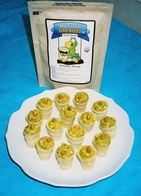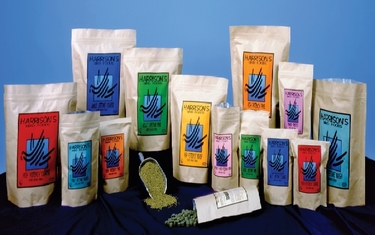Converting Your Bird to a Pelleted Diet
Converting your bird to a pelleted diet is not always quick or easy. When given free choice most birds will go for the fattier seed diet, especially if that is what they are familiar with. However, that doesn’t mean converting cannot or should not be done - pelleted diets are overall a more nutritionally balanced and a healthier option. So here are a few tips to help make the process less daunting:
First, while we do recommend a pelleted diet there are a few circumstances in which you should not attempt conversion. If your bird is sick, or experiencing a stressful change in environment, please wait until the issues are resolved and start converting at your doctor’s recommendation. Throughout the process monitor your bird’s weight and feces. Check with your doctor for a range of safe weight loss.
The method of conversion that we at Chicago Exotics recommend is the “Meal Time” method. Offer your bird only the pelleted diet for the majority of the day. For 30 minutes in the morning and 30 minutes in the evening (the “Meal Times”) offer the preferred seed diet. At all other times there should only be pellets available. Make sure to use the same bowls for both seed and pellets to make the experience as familiar as possible. As with all conversion methods, regularly clean the cage and monitor stool. If stool starts to appear dark or tarry this is a sign that they are not eating enough. In this situation allow longer meal times with seed access.
Another common form of conversion is a gradual change which can be tried if the “Meal Time” method does not work for your bird. Start by making 25% of your birds diet the desired pellet. Monitor your bird’s food intake and weight. Gradually increase the proportion of pellets. Between stages make sure to clean out the cage regularly and monitor the stool. Small or very dark fecals can be an indication that they are not eating enough.
This method works best for birds that are inquisitive and likely to try a new food. If it doesn’t seem to be working you can back up a step in the gradual changes for a week and try again.
Now, as I mentioned the “Meal Time” or gradual conversion method should be your first and primary conversion methods, but there are some other methods that can be used along with either method to help encourage your bird.
1) Change up the environment
As we said earlier you don’t want too much change, and if your bird stresses easily this is not a method you should try. However; sometimes moving around the furniture, the food dishes, or even the cage can encourage new behaviors including feeding. Many birds will instinctively eat from the highest location. You can try moving the food dish up or putting in a few dishes with the higher dish containing more pellets.
2) Use a mirror or white paper
Birds are naturally social and respond to reflections. This is why we discourage mirrors as toys because many birds will actually respond to the reflection as another bird or potential mate. However it also means you can tap into that instinct to encourage pellet eating. Try offering pellets on a mirrored surface. This can help to draw the bird’s attention to the food and encourage eating either socially or competitively. Sometimes a bright white sheet of paper offset against bright pellets can work similarly to draw a bird’s attention.
3) Eat with your bird
You are the greatest source of social interaction for your bird. If your bird is a social eater, try pretending to eat pellets with your bird or offering them as treats during social times.
4) Make it more appealing
Try moistening the pellets with a small amount of sugar free fruit juice. Gradually decrease the amount of fruit juice you add. Make sure not to leave these pellets in the cage for more than an hour or so to avoid bacterial growth.
5) Dust the seeds
Crush pellets and sprinkle them over seeds or other readily eaten food. This can give the bird a small taste for the pellets and make them a more familiar flavor
First, while we do recommend a pelleted diet there are a few circumstances in which you should not attempt conversion. If your bird is sick, or experiencing a stressful change in environment, please wait until the issues are resolved and start converting at your doctor’s recommendation. Throughout the process monitor your bird’s weight and feces. Check with your doctor for a range of safe weight loss.
The method of conversion that we at Chicago Exotics recommend is the “Meal Time” method. Offer your bird only the pelleted diet for the majority of the day. For 30 minutes in the morning and 30 minutes in the evening (the “Meal Times”) offer the preferred seed diet. At all other times there should only be pellets available. Make sure to use the same bowls for both seed and pellets to make the experience as familiar as possible. As with all conversion methods, regularly clean the cage and monitor stool. If stool starts to appear dark or tarry this is a sign that they are not eating enough. In this situation allow longer meal times with seed access.
Another common form of conversion is a gradual change which can be tried if the “Meal Time” method does not work for your bird. Start by making 25% of your birds diet the desired pellet. Monitor your bird’s food intake and weight. Gradually increase the proportion of pellets. Between stages make sure to clean out the cage regularly and monitor the stool. Small or very dark fecals can be an indication that they are not eating enough.
This method works best for birds that are inquisitive and likely to try a new food. If it doesn’t seem to be working you can back up a step in the gradual changes for a week and try again.
Now, as I mentioned the “Meal Time” or gradual conversion method should be your first and primary conversion methods, but there are some other methods that can be used along with either method to help encourage your bird.
1) Change up the environment
As we said earlier you don’t want too much change, and if your bird stresses easily this is not a method you should try. However; sometimes moving around the furniture, the food dishes, or even the cage can encourage new behaviors including feeding. Many birds will instinctively eat from the highest location. You can try moving the food dish up or putting in a few dishes with the higher dish containing more pellets.
2) Use a mirror or white paper
Birds are naturally social and respond to reflections. This is why we discourage mirrors as toys because many birds will actually respond to the reflection as another bird or potential mate. However it also means you can tap into that instinct to encourage pellet eating. Try offering pellets on a mirrored surface. This can help to draw the bird’s attention to the food and encourage eating either socially or competitively. Sometimes a bright white sheet of paper offset against bright pellets can work similarly to draw a bird’s attention.
3) Eat with your bird
You are the greatest source of social interaction for your bird. If your bird is a social eater, try pretending to eat pellets with your bird or offering them as treats during social times.
4) Make it more appealing
Try moistening the pellets with a small amount of sugar free fruit juice. Gradually decrease the amount of fruit juice you add. Make sure not to leave these pellets in the cage for more than an hour or so to avoid bacterial growth.
5) Dust the seeds
Crush pellets and sprinkle them over seeds or other readily eaten food. This can give the bird a small taste for the pellets and make them a more familiar flavor



